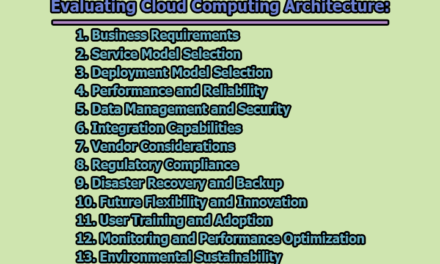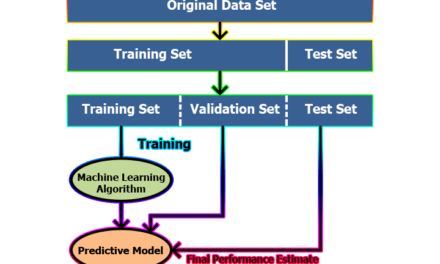Criteria for Choosing a File Organization in Operating System:
In the tricky world of operating systems, where data is the lifeblood, the choice of file organization is a pivotal decision that reverberates across the entire system. Akin to selecting the blueprint for a complex labyrinth, the decision on how data is structured, stored, and accessed profoundly influences the performance, efficiency, and reliability of the system. This article embarks on an exploration of the essential criteria for choosing a file organization in operating system, examining the multifaceted considerations that system architects, administrators, and developers must navigate.
1. Storage Efficiency (The Cornerstone of File Organization): Efficient storage utilization sets the foundation for an effective file organization system. Different file systems employ varied strategies for storage allocation, such as block-based or cluster-based allocation. The choice hinges on factors like the average file size, frequency of file creation and deletion, and the overall storage capacity of the system.
Optimizing storage efficiency not only ensures the judicious use of available space but also contributes to faster data access times. File compression techniques further enhance storage efficiency by reducing the physical footprint of stored data, a consideration that becomes increasingly critical as the volume of data continues to escalate.
2. Data Retrieval Performance (The Need for Speed): The speed at which data can be retrieved from storage is a crucial factor influencing overall system performance. Different file organization systems employ distinct data retrieval mechanisms, with structures like B-trees facilitating efficient searching and retrieval.
Choosing a file organization that aligns with the specific requirements of the applications and workload is essential. Real-time systems may prioritize quick data retrieval, while systems handling large databases may benefit from file organizations that optimize for sequential access. The intricacies of data retrieval performance play a pivotal role in determining the responsiveness of the system.
3. File Access Patterns (Sequential vs. Random): Understanding and aligning with the typical access patterns of stored data is fundamental in choosing an appropriate file organization. Access patterns can be broadly categorized into sequential and random. Some file systems are better suited for sequential access, while others excel in random access scenarios.
Tailoring the file organization to the predominant access pattern can significantly enhance overall system performance. For instance, databases often exhibit random access patterns due to the nature of query processing, while multimedia applications may involve sequential access for streaming large files.
4. Scalability (Growing Beyond Boundaries): As the scale of data continues to grow exponentially, the scalability of file organization systems becomes a critical consideration. The chosen system should be able to handle an increasing number of files and growing storage requirements without a disproportionate decrease in performance.
Scalability considerations involve evaluating the system’s ability to efficiently manage and access data as the scale of operations expands. Ensuring that the chosen file organization remains effective as the demands on the system increase over time is vital for long-term system viability.
5. Fault Tolerance and Reliability (Safeguarding the Data Fortress): In the dynamic landscape of file organization, ensuring data integrity and reliability is paramount. The chosen system should incorporate robust mechanisms for fault tolerance and recovery in the event of system failures, crashes, or power outages.
File systems often implement features such as journaling, checksums, and redundancy to protect against data corruption. The level of fault tolerance required depends on the criticality of the data and the consequences of data loss in specific applications, emphasizing the need for a resilient and reliable file organization.
6. Security Considerations (Protecting the Fort): In an era marked by escalating cyber threats, the security of stored data is a non-negotiable criterion for file organization selection. Robust access control mechanisms, encryption, and authentication protocols are essential components of a secure file organization system.
Different applications and user groups may require varying levels of security. For instance, a file system used in a corporate environment may need to enforce strict access controls, while a personal computer system may prioritize user-friendly access with basic security measures. Balancing usability with security is a delicate yet critical aspect of the decision-making process.
7. Compatibility and Interoperability (Bridging the Gaps): Compatibility with different operating systems and interoperability with various applications is a vital consideration when selecting a file organization system. The ability of file systems to seamlessly exchange data across diverse computing environments is essential for the uninterrupted flow of information.
File systems like FAT32, known for their cross-platform compatibility, are often chosen for removable storage devices. Ensuring that the selected file organization aligns with the interoperability requirements of the intended use case is crucial for preventing compatibility-related hurdles.
In conclusion, the journey of choosing a file organization in an operating system is akin to navigating a complex labyrinth, where each turn brings forth new challenges and considerations. From the foundational aspect of storage efficiency to the intricate details of security and interoperability, every criterion plays a crucial role in shaping the performance, reliability, and accessibility of the system.
As technology advances and the role of data in our lives becomes increasingly central, the importance of informed decision-making regarding file organization cannot be overstated. System architects and administrators must carefully weigh each criterion against the specific requirements of their environments, ensuring that the chosen file organization aligns seamlessly with the goals and demands of the system.
In the ever-evolving landscape of operating systems, where data is both the currency and the commodity, the criteria for choosing file organization serve as guiding beacons, enlightening the path towards a system that is efficient, reliable, and resilient in the face of evolving challenges.

Library Lecturer at Nurul Amin Degree College










